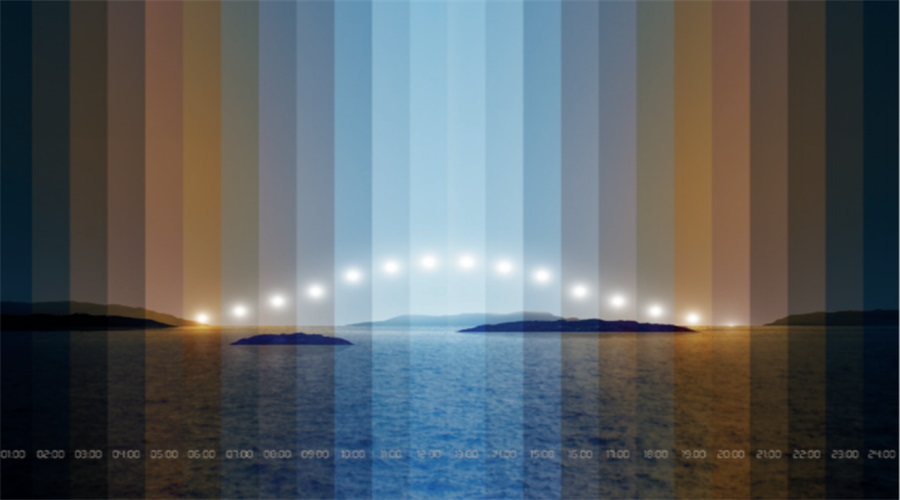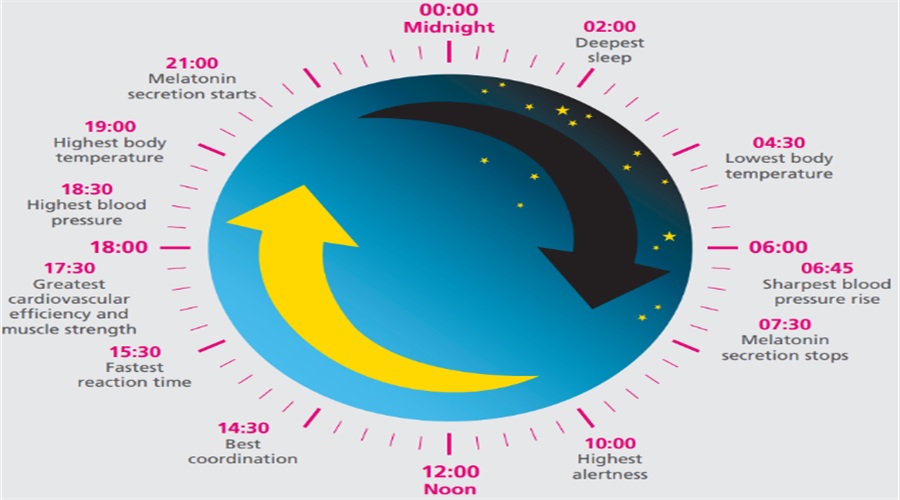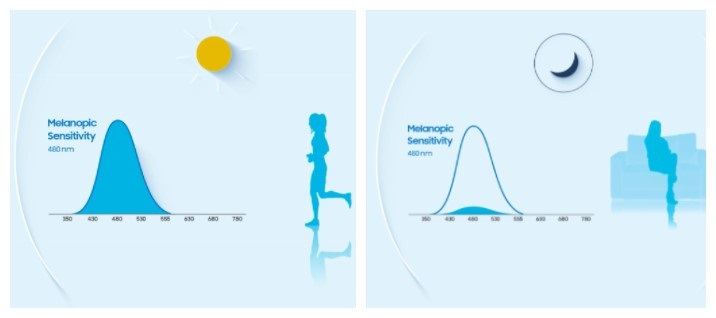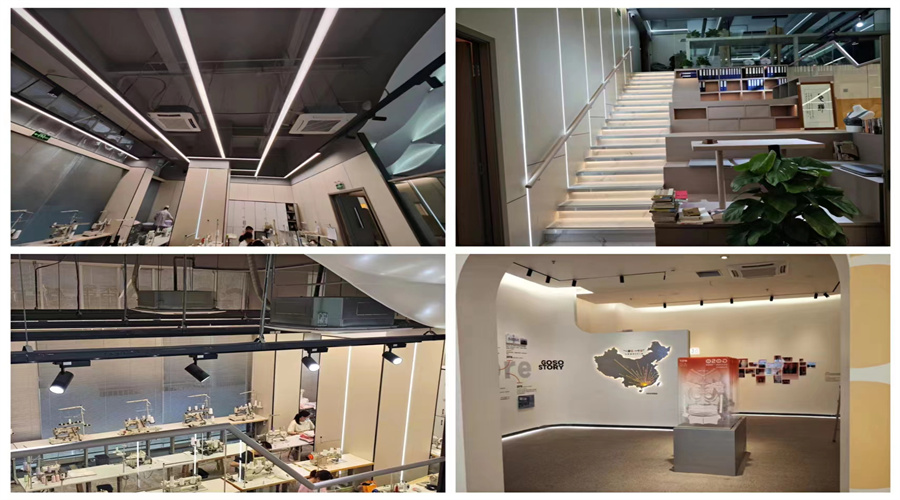In the morning, is it the alarm clock, the first light or your own biological clock that wakes you up?
Research has shown that 5 factors influence the human physiological rhythm:
1. The intensity of light incident on the human eye
2. The spectral characteristics of light
3. timing of light exposure
4. duration of light exposure
5. the individual’s light history
People, like plants, cannot live without light.
Plants need photosynthesis to promote growth, while we, on the other hand, need light to keep our biological clock running and synchronized with the 24-hour circadian rhythm.
One rotation of the earth is 24 hours, and the natural rhythm of day and night regulates the body’s operation and implicitly influences our behavior and emotions.
In 2002, autonomous photoreceptor retinal ganglion cells were discovered, and research showed that it affects the operational system of the brain nerves at the non-visual level, thus opening up the research on light and health.
The rhythm of light in lighting solutions can be precisely regulated according to the human body’s need for healthy lighting, leading to the modulation of non-visual biological effects .
1. Effective regulation of human melatonin secretion
Poor sleep at night, drowsiness, lack of energy and concentration during the day, this phenomenon belongs to melatonin is secreted. The “Human Rhythm Lighting” technology is based on a profound study of melatonin to effectively balance lighting performance with the least possible loss of light efficiency.
It can effectively regulate the secretion of melatonin by controlling blue-green light in the 480nm wavelength band. During the daytime, it can inhibit the release of melatonin to ensure that the body maintains full energy during the day. At night, it can promote the release of melatonin, so that the body can get enough relaxation and rest.
2. Developed a “healthy” spectrum
As an optical semiconductor technology, “SunLike” LEDs are able to reproduce the natural light spectrum curve of red, orange, yellow, green, cyan, blue and violet at various wavelengths, reflecting almost the same characteristics as natural light and optimizing the human circadian rhythm accordingly. Currently, SunLike technology is widely used in commercial, educational, smart home and other lighting scenarios.
The meaning of the full spectrum is to reproduce sunlight.
At present, the market launched human factors lighting products, innovative spectrum adjustable algorithm, can maximize the simulation of the full spectrum, restore the real natural light, you can enjoy natural light at home.
Combined with the simulation of sunlight throughout the year early-mid-night different time periods color temperature changes, brightness changes, full-spectrum LED can provide more like real natural light, strong color reproduction ability, color rendering index close to 100 (Ra>97,CRI>95,Rf>95,Rg>98), while the recommended UGR value between 14 ~ 19, so that office workers, shopping mall employees, customers, etc. can feel the natural healthy light without leaving home, re-bring back the role of natural light in human physiology, psychology, human health.
Through the intelligent control system to identify the human breathing heartbeat and independent lighting on and off, to achieve “people come to light, people leave the light off”. Also through real-time monitoring of the temperature and humidity of the lighting environment, light conditions, so that the illumination of lamps and lanterns to maintain within a reasonable range, when the sunlight intensity is reduced, the lamps and lanterns automatically brighten; when the sunlight intensity is enhanced, the lamps and lanterns automatically dim. These changes comply with the natural physiological rhythm of the human body (biological clock), which can make people feel comfortable and healthy similar to natural light, and provide a refined light environment for different time periods.
3. Unified with the visual lighting design needs
Visual lighting design emphasizes the visibility, aesthetics and comfort of the light environment, while rhythmic lighting based on non-visual effects focuses on the retinal neurological effects caused by the ambient light entering the human eye, with corneal illumination and spectral power distribution as its important indicators.
4. Implanting the concept of rhythm regulation in lighting products
The concept of rhythm regulation is implanted in the lighting products to provide customers with photobiological effect lighting solutions that contribute to rhythm stability based on daylight conditions and weather conditions.
Using the scenario experience module as a method, we provide different color temperatures according to different areas and use special optical technology that mixes the light output of different lamps to achieve a balance between warm and cold lighting, mimicking the natural rhythm of day and night, the lighting can be adjusted to the environment to make the human body respond to health.
Post time: Feb-02-2023










